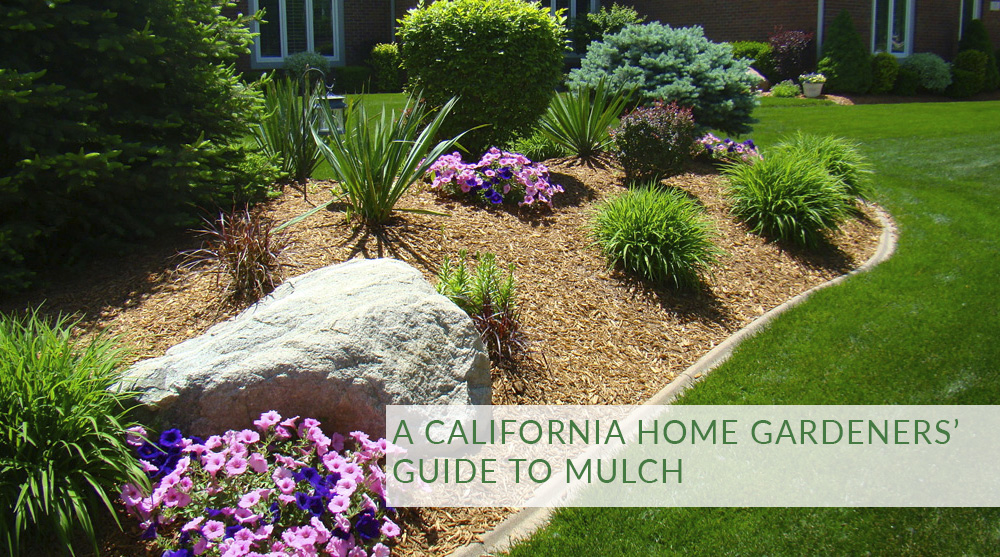With gorgeous weather and practically 12 months of sunny skies, California gardening can be enjoyed all year long. We’ve got lots of home gardening and plant-loving friends here in Visalia that often turn to us for landscaping advice and lately we’ve been hearing a lot about mulching. We love mulch! It’s a great tool for keeping plants healthy and happy, and it’s easy to use. Here’s what you need to know:
What is mulch?
Mulch is simply a protective layer of organic (such as shredded tree bark) or non-organic (such as pea gravel) material that is spread on the surface of the ground around flowers, plants, trees, and in gardens and landscaping. There are different types of mulch that serve different purposes, so it’s a good idea to check with a landscape professional or garden specialist to find the right type for your specific needs.
Benefits of mulch
- New plants, small trees, and young gardens are vulnerable to frost damage, along with soil erosion from wind and water runoff. Mulch prevents erosion until roots mature and take hold, and insulates plant roots from freezing temperatures. It even prevents mud from splashing up onto plants during heavy rain showers, which is not only unsightly, but can spread disease and fungal spores.
- In drought areas, mulch is also an effective tool for water conservation. Mulch slows evaporation in hot, dry climates and boost ability of the soil to retain moisture throughout the year.
- Mulches make gardens and landscaping look better! They discourage weed growth, can be used to create pathways, prevent muddy spots and clay from building up, and give everything a tidier, more finished appearance.
Types of mulch
Different kinds of mulches are good for different kinds of plants, there is no universal mulch that works for everything. Types of mulches made from organic materials that you’ll often see here in Central California include chipped bark, shredded redwood, wood chips, dry leaves and grass clippings, home composts (kitchen and garden waste), and a variety of manures. Inorganic mulches consist of crushed rock, decomposed granite, pea gravel, river or lava rock, and decorative pebbles.
For more details on types of mulches, the UC Master Gardener Program and the California Association of Nurseries and Garden Centers websites have great overviews of what’s commonly available in our state, and what plants you should use them with.
How to use mulch
First, be sure to remove all weeds and thoroughly water the areas you plan to mulch. Next be sure you apply the right amount. Mulch needs to be thick enough to insulate and prevent evaporation, but not so thick that it promotes disease or keeps plants from getting enough moisture or nutrients. A good rule of thumb is 2-4 inches deep for organic mulches and 1-2 inches deep for inorganic mulches. Also, when putting mulch around trees or plants, do not pile it up like anthills around the trunks or stems. As you apply mulch to your garden or landscaping, give trunks and stems a few inches of bare space to help prevent fungal diseases, rot, and unwanted pests.

